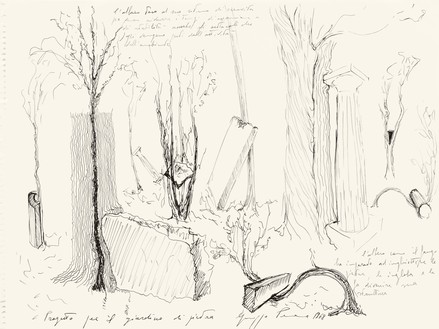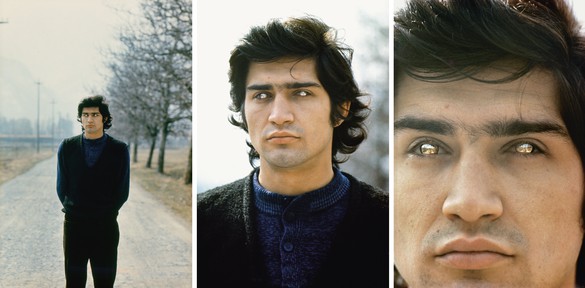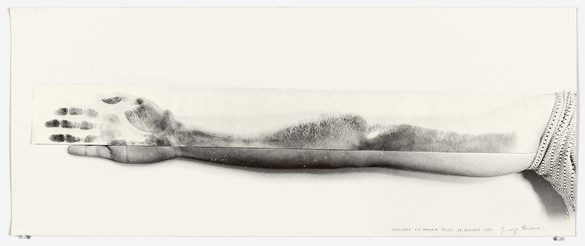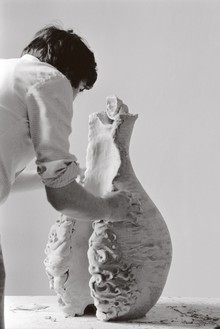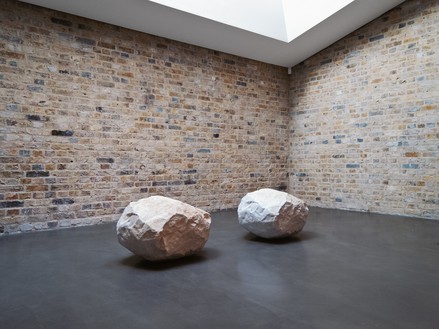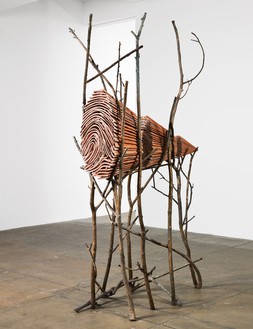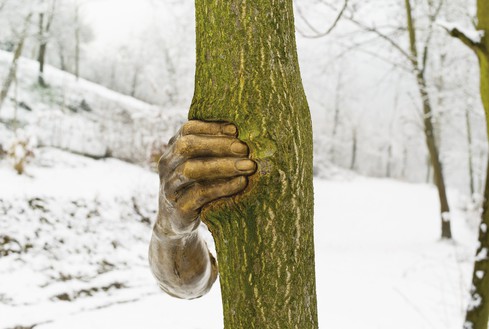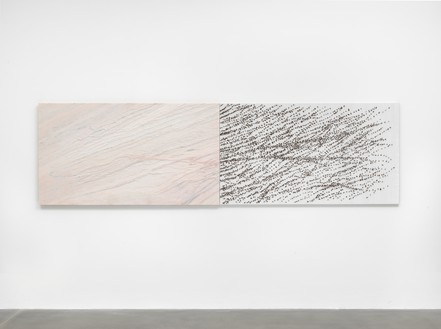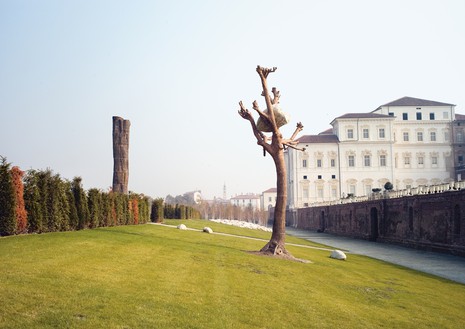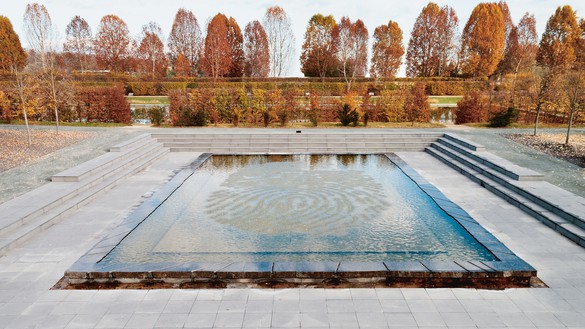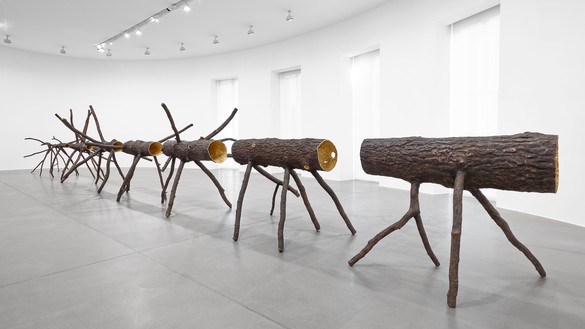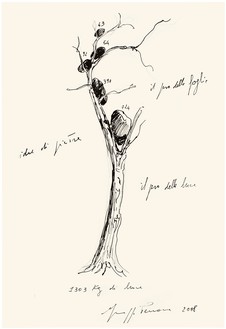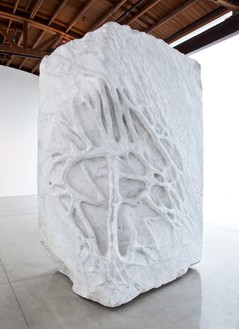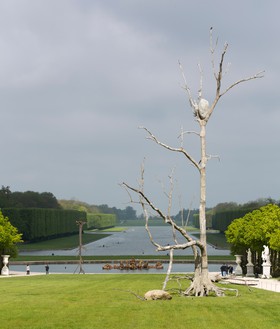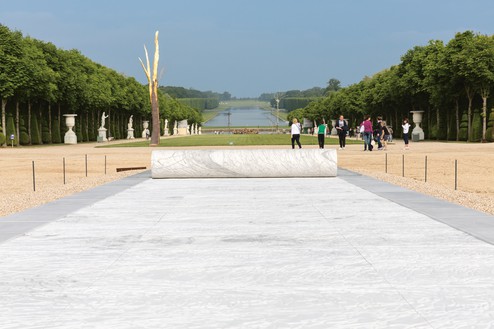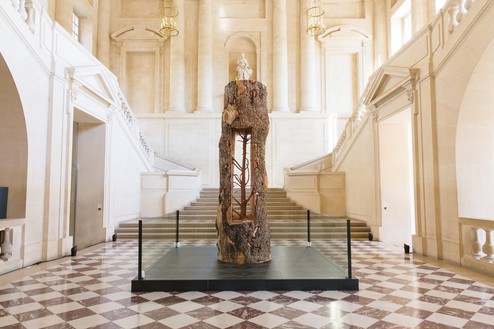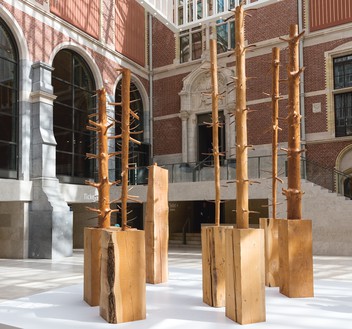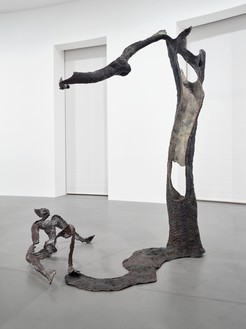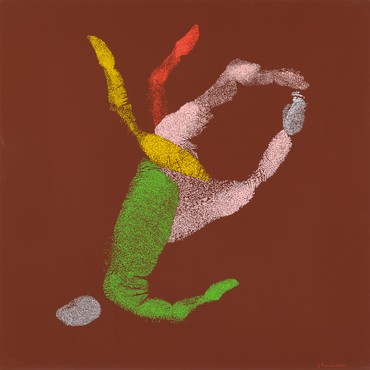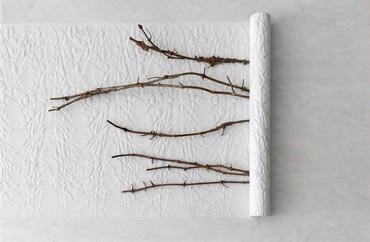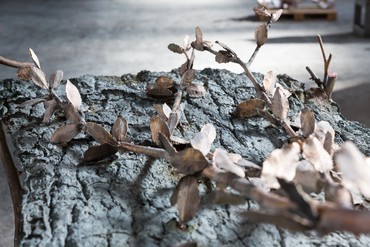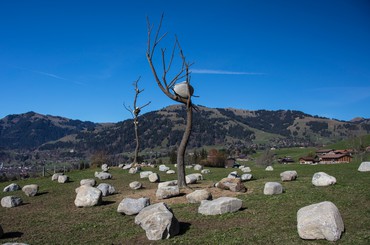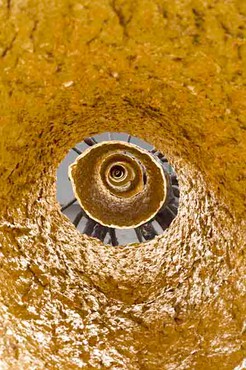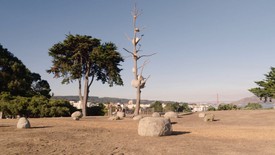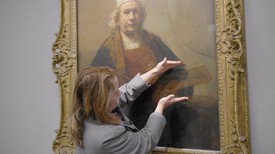About
The veins of water that pour from the earth flow in trickles that merge, like the branches in the trunk, like the fingers in the palm of a hand, like the bronze in the matrix of a tree.
—Giuseppe Penone
Throughout his fifty-year career, Giuseppe Penone has employed a wide range of materials and forms in an exploration of the fundamental language of sculpture. A protagonist of Arte Povera, Penone explores respiration, growth, and aging—among other involuntary processes—to create an expansive body of work including sculpture, performance, works on paper, and photography.
Penone’s early performance-based works evolved in direct response to the forests near his native village of Garessio, Italy, where he interacted with trees, water, and marble. In the Alpi Marittime (Maritime Alps) works (1968), his gestures and interventions left physical traces over extended periods of time: tree trunks were distorted by copper wire, stones, and bronze casts of the artist’s hand; mechanisms made of ropes and deer hides reacted to the weather; and casts of Penone’s face, hands, and feet were immersed in a stream bed.
In 1969 Penone created the first of his Alberi (Trees): “stripped” trees made by carving into mature timbers and removing the wood along the outer growth rings to reveal the memory of a sapling at the core of the trunk. This ongoing series has taken on various permutations as Penone refines his techniques and experiments with different sizes and installations. In 1970 he even carved an Albero in the presence of an audience, merging sculpture and performance. This same year he made the Rovesciare i propri occhi (Reversing One’s Eyes) works, in which he wore custom-made mirrored contact lenses and had himself photographed. The lenses, though they deprived the artist of his own gaze, allowed him to objectively record images, literally reflecting his surroundings.
During this period Penone also began to explore different ways of documenting his work, as well as his body’s interactions with sculpture. In the Svolgere la propria pelle (To Unroll One’s Skin) series (1970–71), he captured the intricate patterns of rock and bark, skin and hair, through frottage (taking rubbings on sheets of paper), imprints (pressing his body into surfaces), and photography. Then, with the Soffi (Breath) works (1977–), Penone attempted to translate into sculpture the ephemeral phenomenon of breath. He took photographs of light powder that he had blown into the air and translated the cloud-like forms into bronze sculptures, drawings, and vase-like constructions.
Essere fiume (To be a River, 1981) marked an important turning point in Penone’s practice. Extracting chunks of stone or marble from the source of a river, he carved them so that they resembled the smaller, smoother stones at the bottom of the riverbed, mimicking the effects of water on the rocks’ shape and size. Then, returning to an investigation of the figure, Penone began the Gesti vegetali (Vegetal Gestures) works (1982–), hollow anthropomorphic sculptures whose forms were based on single gestures or movements.
In the 1990s Penone worked on the Anatomie (Anatomies, 1992–), which included Carrara marble and other stones carved in high relief to echo vascular and muscular systems, as well as the Propagazioni (Propagations, 1995), a series of drawings based on the concentric linear patterns of a fingerprint. Since then he has continued to expand upon many of his earlier series and to work on the Idee di pietra (Ideas of Stone) sculptures (2003–), in which he juxtaposes rocks and trees to highlight the balance between verticality and horizontality and the interplay of gravity and growth. Penone has also designed two gardens, one in Turin and one in the Reggia di Venaria in Piedmont.
In Penone’s work, sculptural transformations draw the viewer’s attention to details that have long existed but are easily overlooked. By bringing the grandeur—as well as the modesty and intimacy—of raw but also cultural material into various settings, Penone raises questions about sculpture and its essence.
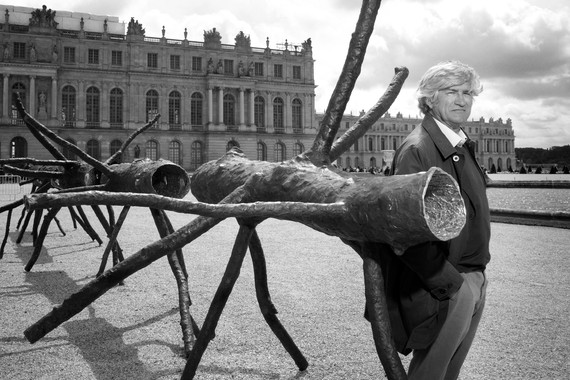
Photo: Manuel Lagos Cid/Paris Match Archive/Getty Images
#GiuseppePenone
Website
Exhibitions
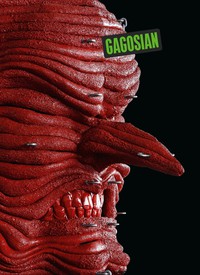
Now available
Gagosian Quarterly Fall 2022
The Fall 2022 issue of Gagosian Quarterly is now available, featuring Jordan Wolfson’s House with Face (2017) on its cover.
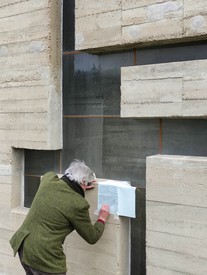
Giuseppe Penone À La Tourette
Le Couvent Sainte-Marie de La Tourette, in Éveux, France, is both an active Dominican priory and the last building designed by Le Corbusier. As a result, the priory, completed in 1961, is a center both religious and architectural, a site of spiritual significance and a magnetic draw for artists, writers, architects, and others. This fall, at the invitation of Frère Marc Chauveau, Giuseppe Penone will be exhibiting a selection of existing sculptures at La Tourette alongside new work directly inspired by the context and materials of the building. Here, Penone and Frère Chauveau discuss the power and peculiarities of the space, as well as the artwork that will be exhibited there.
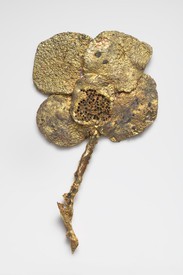
Augurs of Spring
As spring approaches in the Northern Hemisphere, Sydney Stutterheim reflects on the iconography and symbolism of the season in art both past and present.

Giuseppe Penone: By the Bay
Elizabeth Mangini writes on Giuseppe Penone’s installation of two sculptures at San Francisco’s Fort Mason.
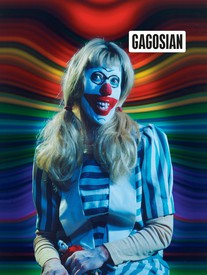
Now available
Gagosian Quarterly Spring 2020
The Spring 2020 issue of Gagosian Quarterly is now available, featuring Cindy Sherman’s Untitled #412 (2003) on its cover.
Giuseppe Penone at Fort Mason
An outdoor installation by Giuseppe Penone in San Francisco’s historic Fort Mason features two life-size bronze sculptures cast from fallen trees. The project continues the artist’s long investigation of the perpetual give-and-take between humans and nature. In this video, Penone discusses what drew him to this landscape and the concepts behind the installation.
Giuseppe Penone: Foglie di bronzo / Leaves of Bronze
Gagosian director Pepi Marchetti Franchi speaks about Giuseppe Penone’s recent exhibition in San Francisco, detailing the various works and their relationships to the artist’s long-standing sculptural practice.
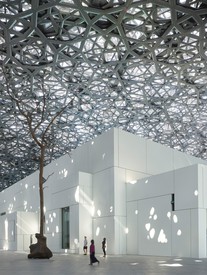
Rain of Light
One year after the opening of the Louvre Abu Dhabi, Jean Nouvel and Giuseppe Penone sat down with Alain Fleischer, Pepi Marchetti Franchi, and Hala Wardé to reflect on how the museum and Penone’s commissioned artworks for the space came to be.
Visions of the Self: Jenny Saville on Rembrandt
Jenny Saville reveals the process behind her new self-portrait, painted in response to Rembrandt’s masterpiece Self-Portrait with Two Circles.
Gagosian Quarterly Talks
Giuseppe Penone and Carlos Basualdo
Giuseppe Penone discusses his new monograph, The Inner Life of Forms, with the book’s editor Carlos Basualdo, senior curator of contemporary art at the Philadelphia Museum of Art, at the Greene Space, New York. Hosted by art critic Deborah Solomon.
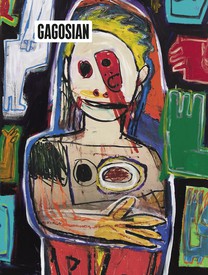
Gagosian Quarterly Winter 2018
The Winter 2018 issue of Gagosian Quarterly is now available. Our cover this issue comes from High Times, a new body of work by Richard Prince.

Behind the Art
Ideas of Stone
In the small skiing village of Gstaad, among the towering mountains of the Swiss Alps, lies a surprising and ambitious exhibition of sculpture by Giuseppe Penone. Susan Ellicott tells the story of how this installation came to be.
Fairs, Events & Announcements

Honor
Giuseppe Penone
Årets Konstnär 2024
Giuseppe Penone has been named 2024’s Artist of the Year by Prinsessan Estelles Kulturstiftelse (preks), a foundation established in 2019 by Sweden’s Crown Princess Victoria and Prince Daniel and named for their daughter, Princess Estelle, with the mission of promoting cultural activities in the country. Every year, the chosen artist is invited to create a monumental, site-specific work to be permanently installed within Prinsessan Estelles Skulpturpark, a sculpture park at Royal Djurgården in Stockholm. Penone’s sculpture, The Inner Flow of Life (2022), will be unveiled on May 30, 2024.
Giuseppe Penone, Project for Royal Djurgaden, 2022 © Giuseppe Penone/2024 Artists Rights Society (ARS), New York/ADAGP, Paris. Photo: © Archivio Penone
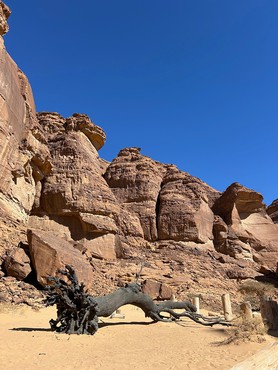
Public Installation
Giuseppe Penone
Desert X AlUla 2024
February 9–March 23, 2024
AlUla, Saudi Arabia
desertx.org
Giuseppe Penone’s sculpture La logica del vegetale – Metamorfosi (Vegetal Logic – Metamorphosis) (2024) is installed in an ancient desert canyon in the Arabian Peninsula as part of Desert X AlUla 2024. The 17-meter-tall (almost 56-foot-tall) cast bronze chestnut tree lies on its side with gnarled roots exposed, surrounded by pieces of fossilized trees, revealing the interdependence between sculpture and nature across geological time. This is the third edition of Desert X AlUla, a collaboration between Desert X and the Royal Commission for AlUla established to advance new cultural dialogue through art. Curated by Maya El Khalil and Marcello Dantas, the selection of works explores the theme “In the Presence of Absence” and asks the question “What cannot be seen?”
Giuseppe Penone, La logica del vegetale – Metamorfosi (Vegetal Logic – Metamorphosis), 2024, installation view, AlUla, Saudi Arabia © Giuseppe Penone/2024 Artists Rights Society (ARS), New York/ADAGP, Paris
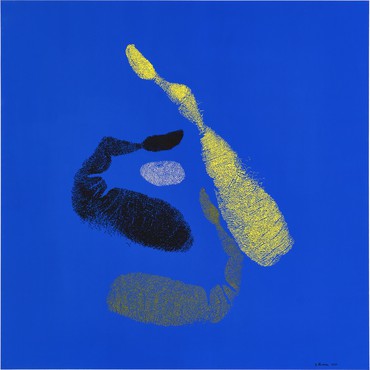
In Conversation
Giuseppe Penone
Hala Wardé
Wednesday, December 6, 2023, 6:30pm
Gagosian, 4 rue de Ponthieu, Paris
Please join Gagosian for a conversation between Giuseppe Penone and architect Hala Wardé inside Impronte di luce / Empreintes de lumière, an exhibition of new paintings by the artist inspired by his experience of Le Corbusier’s Couvent Sainte-Marie de La Tourette in Éveux, France. The longtime friends will discuss Penone’s latest body of work and their most recent collaboration for Louvre Abu Dhabi, where Wardé was partner architect and Penone was one of two artists commissioned to create site-specific permanent installations. They will also consider the creative exploration of space, form, and material inherent to both art and architecture, shedding light on the fascinating intersections that shape their collaborative efforts. The conversation will be conducted in French.
Giuseppe Penone, Impronte di luce (Imprints of Light), 2023 © Giuseppe Penone/2023 Artists Rights Society (ARS), New York/ADAGP, Paris. Photo: Thomas Lannes
Museum Exhibitions
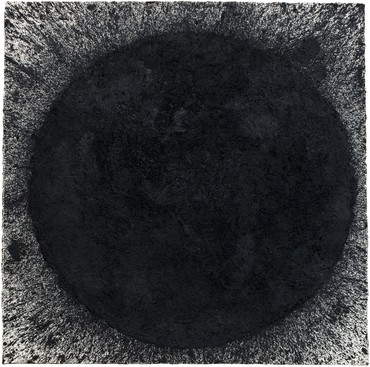
Closed
Favoloso Calvino
October 13, 2023–February 4, 2024
Scuderie del Quirinale, Rome
scuderiequirinale.it
Favoloso Calvino, which translates to Fabulous Calvino, celebrates the centenary of the birth of the Italian author Italo Calvino (1923–1985), and examines his creative path by displaying art that inspired his imagination, writings, and theories. The exhibition comprises more than two hundred works including medieval illuminated manuscripts and tapestries as well as paintings, sculptures, and drawings by artists from the Renaissance to today, presented alongside original volumes and first editions of Calvino’s books. Work by Giuseppe Penone and Richard Serra is included.
Richard Serra, Calvino, 2009 © 2023 Richard Serra/Artists Rights Society (ARS), New York
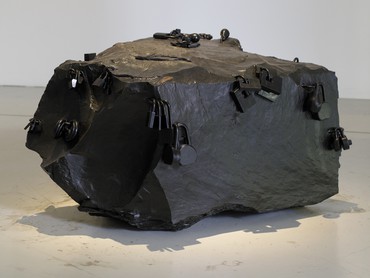
Closed
Storie di pietra
October 13, 2023–January 14, 2024
Villa Medici–Académie de France à Rome
www.villamedici.it
This exhibition, whose title translates to Stories of Stones, brings together nearly two hundred works, from the oldest terrestrial mineral dating back 4.4 billion years to the latest mineral, Sentimentite, created by contemporary artist Agnieszka Kurant. The exhibition explores the idea that stones have inspired artists from all eras. Work by Damien Hirst, Henry Moore, Giuseppe Penone, Pablo Picasso, and Tatiana Trouvé is included.
Tatiana Trouvé, Rock, 2007 © Tatiana Trouvé. Photo: Philippe Migeat
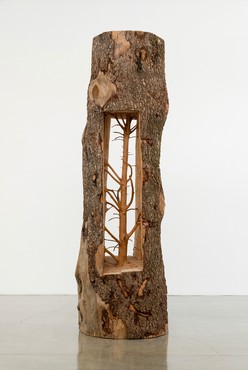
Closed
Giuseppe Penone in
Saint Francis of Assisi
May 6–July 30, 2023
National Gallery, London
www.nationalgallery.org.uk
Through art from the thirteenth century to the present day, this exhibition examines why Saint Francis of Assisi (1182–1226) remains a figure of enormous relevance to our time. From early medieval panels, relics, and manuscripts to contemporary films, paintings, sculpture, and a Marvel comic, the exhibition shines a light on how the saint has captured the imagination of artists throughout the centuries, and how his appeal has transcended generations, continents, and different religious traditions. Work by Giuseppe Penone is included.
Giuseppe Penone, Albero porta – cedro (Door Tree – Cedar), 2012 © Giuseppe Penone. Photo: Josh White
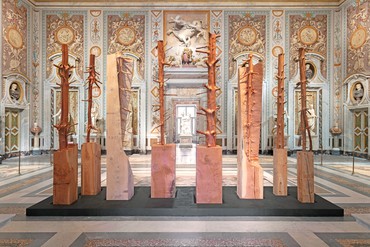
Closed
Giuseppe Penone
Gesti universali
March 14–July 9, 2023
Galleria Borghese, Rome
galleriaborghese.beniculturali.it
Curated by Francesco Stocchi, this exhibition, whose title translates to Universal Gestures, features more than thirty works created by Giuseppe Penone between the 1970s and the early 2000s. Installed in both the ground-floor rooms and gardens of the Galleria Borghese, the sculptures highlight a symbiosis between built and natural forms, underlining the fluidity that unites all plant, human, and mineral elements. The exhibition proposes a new reading of the relationship between landscape and sculpture embodied in the museum’s collection of work by Gian Lorenzo Bernini (1598–1680).
Installation view, Giuseppe Penone: Gesti universali, Galleria Borghese, Rome, March 14–July 9, 2023. Artwork © Giuseppe Penone. Photo: S. Pellion, courtesy Galleria Borghese
